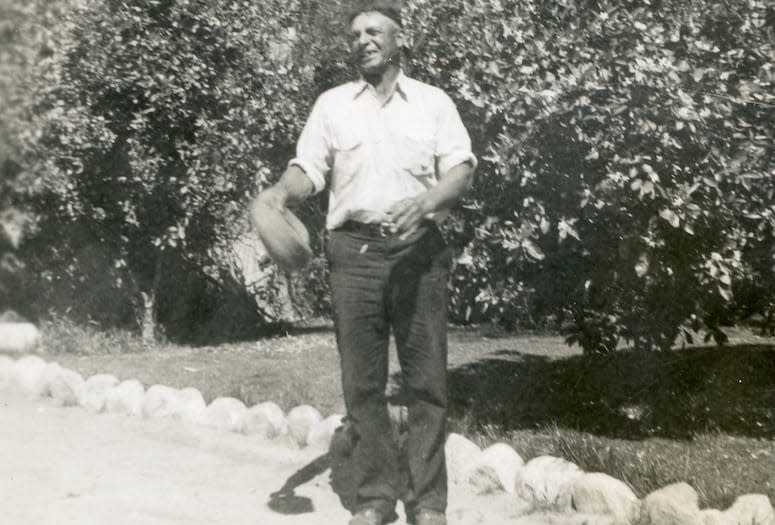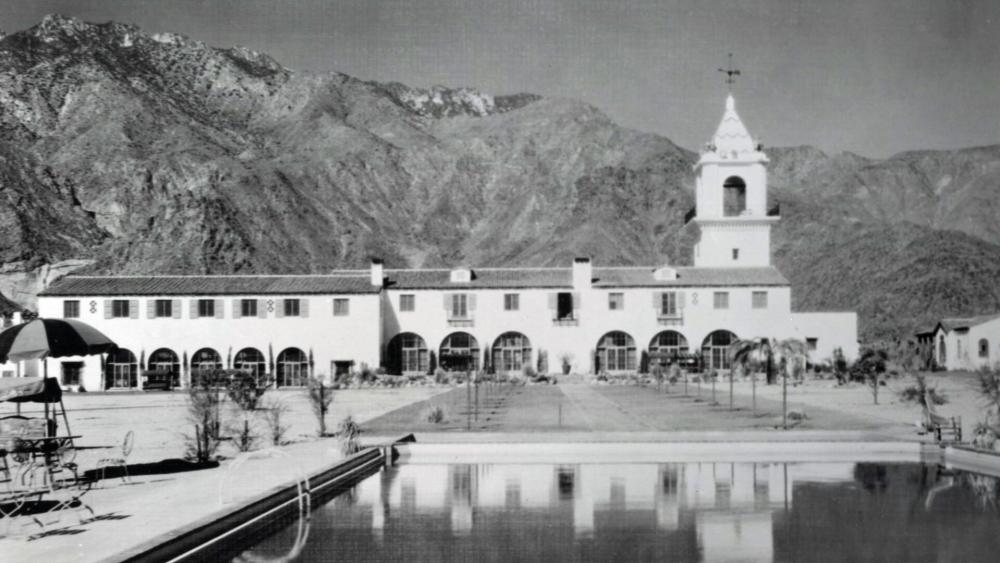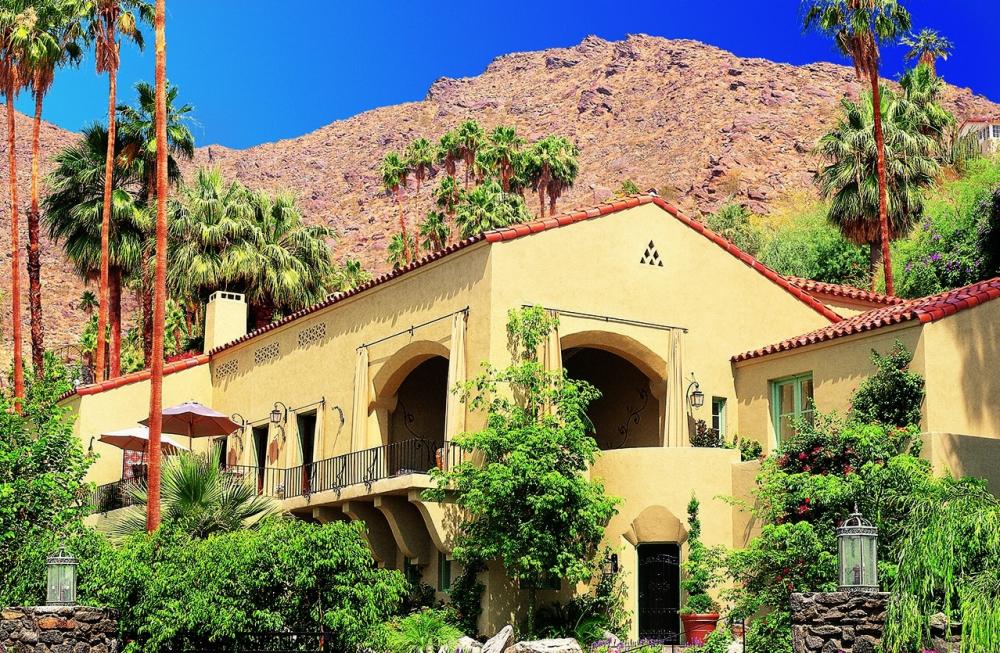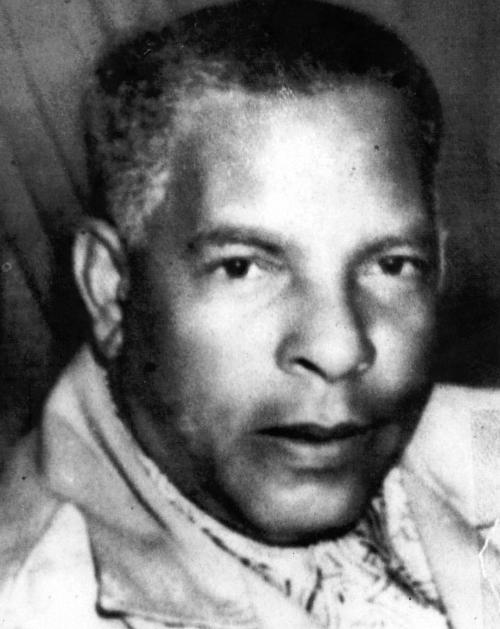
Lawrence Crossley (c. 1890–1962) was a pioneering African American entrepreneur and developer who left an enduring mark on Palm Springs. Originally from Louisiana and a former Basin Street Blues jazz trumpeter, Crossley arrived in 1924 and quickly became a trusted business advisor, land developer, and civic leader.
Bright and ambitious, Crossley saw opportunities in Palm Springs early on and took a position as chauffeur and handyman to Prescott Thresher Stevens, owner of the popular El Mirador Hotel. Soon after, he sent for his wife, Martha, and his two daughters, Margaret and Yvonne. Martha became Stevens' maid and cook. His cousin, Willie Crossley, would also work at El Mirado for a few years during the 1930s.

Courtesy Palm Springs Historical Society
Recognizing Crossley’s business sense, Stevens quickly promoted him to assist in developing the hotel and to design Palm Springs' first 18-hole golf course, the El Mirador Golf Course. Crossley was said to be well known in New Orleans golf circles, so this was a natural. The hotel and course opened in 1928, attracting celebrities from near and far. Crossley planted fruit trees and raised chickens and turkeys for the hotel's restaurant. Unfortunately, the magic did not last when the stock market crashed.
Stevens also enlisted Crossley to manage his Whitewater Mutual Water Company, which provided water to the Las Palmas neighborhood and the north end of Palm Springs.
Other prominent businessmen liked Crossley’s style. He became grounds superintendent for the Palm Springs estate of wealthy New York attorney Samuel Untermyer, now The Willows Historic Palm Springs Inn. These and other corporate moguls encouraged Crossley to invest for himself, which he did—with stellar success.

In the early 1930s, Crossley acquired some five acres near East Ramon Road and South Sunrise Way, which he developed into Crossley Court, the first-known example of land ownership by an African American in Palm Springs. It was a 20-acre subdivision that is now part of the Ramon Mobile Home and RV Park. He also created Eagle Canyon Trailer Village and the Tramview Village in Cathedral City, two decades before the tram was built.
Tramview Water Company
Crossley owned the Tramview Water Company under the umbrella company name of Crossley Enterprises. It serviced the Crossley Tract and Tramview Village. After Crossley's death, it was taken over by Rex Boyd, a superintendent, and later sold to the Palm Springs Water Company, of which Harold Hicks was president.
Partnership with the Agua Caliente Tribe
During a time when many members of the Agua Caliente Band of Cahuilla Indians lived in poverty on Section 14 without legal ownership of their land, Lawrence Crossley became a trusted ally. He built strong relationships with tribal members, offering comfort, support, and advocacy, while he and his wife, Martha, provided food and supplies to those in need.
Crossley gained deep respect within the tribe—so much so that he was the only non-Native American invited to tribal leadership meetings in the sacred "round house." He developed a close friendship with Chief Francisco Patencio, who shared tribal knowledge and even inspired Crossley to create a red tea and skincare line using traditional plant-based remedies. The tea was an old home remedy that the tribe used for kidney trouble and other ailments.
In the 1950s, Crossley partnered with Judge Hilton McCabe to help the Agua Caliente tribe finally secure rightful ownership of their land and access long-overdue federal resources. Crossley served as a liaison, breaking down bureaucratic barriers and championing tribal rights until he died in 1962. Just before he passed away, he submitted a petition signed by 41 tribal members thanking McCabe for the efforts both men had made to bring long-overdue justice and prosperity to the Agua Caliente people.
Coin-Operated Laudramat
One of 102 surviving members of the Agua Caliente tribe in 1961, John Joseph Patencio, 45, opened a coin-operated laundromat that was managed by Lawrence Crossley. Patencio was last in the line of succession as tribal chief and was one of the few members who could chant the local Indian dialect for ceremonies and wakes. The laundromat was located in Section 14.

Courtesy Palm Springs Historical Society
A Vision Realized: The Legacy of Crossley Tract
In the late 1950s, Lawrence Crossley expanded his impact on Palm Springs by purchasing a large tract of land and partnering with Al Casey, president of the Sun-Spa Development Corporation, to develop a new 20-acre residential neighborhood. The result was Crossley Tract—a 77-parcel subdivision built to FHA standards and designed to provide quality, affordable housing, primarily for African American families. This was specifically designed to assist residents who were forced to move from Section 14 due to new Indian land leasing agreements.
Each home featured three bedrooms and two bathrooms in a range of floorplans, with modern amenities such as paved streets, natural gas, and dedicated school bus service. The community represented not just housing, but opportunity—and it quickly gained momentum.
By late 1958, the first home was move-in ready. According to news reports, Crossley and his wife, Martha, took up residence directly across from the model home at 1543 Ramon Road. By 1961, 30 homes had been completed and sold.
Sadly, the project’s progress was cut short in 1962 when Crossley died suddenly of a heart attack. Though his passing brought uncertainty to the development’s future, his vision had already reshaped the possibilities for Black homeownership in Palm Springs. At the time of his death, Crossley was widely recognized as a successful entrepreneur and was described as “a wealthy Palm Springs businessman and developer,” leaving behind an estate valued at $1.5 million—a remarkable figure for the era. His wife, Martha, passed away in 1964 of a heart attack at the age of 63.
In 2020, following a Palm Springs Planning Commission recommendation, the City Council voted to rename Golf Club Drive and adjacent Crossley Road as Lawrence Crossley Road. The thoroughfare—named for a successful, sincere, and generous valley pioneer—now connects Ramon Road to Highway 111 on the city’s east side.